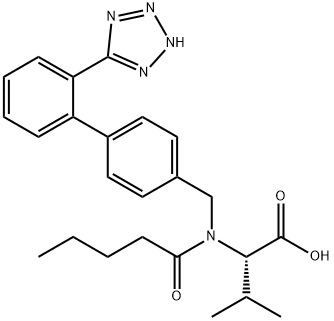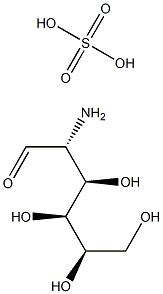RDEA 594
- CAS NO.:878672-00-5
- Empirical Formula: C17H14BrN3O2S
- Molecular Weight: 404.28
- MDL number: MFCD22572730
- EINECS: 689-245-8
- SAFETY DATA SHEET (SDS)
- Update Date: 2024-11-19 23:02:33

What is RDEA 594?
Absorption
Oral lesinurad is rapidly absorbed, reaching maximum plasma concentrations (Cmax) within 1–4 h following the administration a single 200 mg dose (in either the fed or fasted state).
Description
Approved by the FDA late in 2015, lesinurad is an urate anion exchange transporter 1 (URAT1) inhibitor for use in the treatment of gout. Ardea Biosciences, which is a subsidiary of AstraZeneca, developed lesinurad to be used in a combination therapy with xanthine oxidase inhibitors for the treatment of hyperuricaemia associated with gout. The approval process is ongoing in several other countries across the globe, with the EMA Committee for Medicinal Products for Human Use giving lesinurad a positive opinion for use as an adjunctive therapy in combination with xanthine oxidase inhibitors to treat hyperuricaemia.
The Uses of RDEA 594
Lesinurad is used to synthesize febuxostat which is a non-purine analog inhibitor of xanthine oxidase. Febuxostat is approved by the European Medicines Agency and the US Food and Drug Administration for treating gout.
Indications
For use, in combination with a xanthine oxidase inhibitor, for the treatment of hyperuricemia associated with gout in patients who have not achieved target serum uric acid levels with a xanthine oxidase inhibitor alone.
Background
Lesinurad is an oral uric acid transporter 1 (URAT1) inhibitor indicated for the treatment of hyperuricemia associated with gout. It reduces serum uric acid concentration through the inhibition of URAT1, an enzyme responsible for reuptake of uric acid from the renal tubule, and OAT4, another uric acid transporter associated with diuretic-induced hyperuricemia.
Marketed as the product Zurampic, it is indicated for use in combination with a xanthine oxidase inhibitor for the treatment of hyperuricemia associated with gout in
patients who have not achieved target serum uric acid levels with a xanthine oxidase inhibitor alone. In August 2017, a combination oral therapy consisting of lesinurad and Allopurinol was FDA-approved under the brand name Duzallo indicated for the treatment of gout-related hyperuricemia in patients with uncontrolled gout.
Definition
ChEBI: A member of the class of triazoles that is [(3-bromo-1,2,4-triazol-5-yl)sulfanyl]acetic acid substituted at position 1 of the triazole ring by a 4-cyclopropylnaphthalen-1-yl group. Used for treatment of gout.
Pharmacokinetics
Dose-dependent reductions in serum uric acid levels and increases in urinary uric acid excretion have been observed following single and multiple oral doses of lesinurad.
Synthesis
The synthesis of lesinurad began with commercial 1- bromonaphthalene (138). A Kumada coupling between this bromide and cyclopropyl Grignard delivered 139, which after selective nitration to give 140, delivered the oxylate salt 141 (which now is commercially available). Treatment of 141 with KOH followed by thiophosgene at 5 ??C delivered isothiocyanate 142 in 63% yield. Reaction of 142 with formyl hydrazine followed by addition of potassium bicarbonate and mild heating resulted in thio-1,2,4-triazole 144 by the intermediacy of 143. Quantitative alkylation of triazolothiol 144 resulted in |á-mercaptan 145, and this was followed by NBS bromination to afford bromotriazole 146. Ester saponification followed by acidification secured lesinurad (XVII) in a good yield over the final three steps.

Metabolism
Lesinurad undergoes oxidative metabolism mainly via the polymorphic cytochrome P450 CYP2C9 enzyme.
Properties of RDEA 594
| Melting point: | >171oC (dec.) |
| Boiling point: | 643.7±65.0 °C(Predicted) |
| Density | 1.72±0.1 g/cm3(Predicted) |
| storage temp. | -20°C Freezer, Under inert atmosphere |
| solubility | DMSO (Slightly), Methanol (Slightly, Heated) |
| form | Solid |
| pka | 2.91±0.10(Predicted) |
| color | White to Off-White |
Safety information for RDEA 594
| Signal word | Warning |
| Pictogram(s) |
 Exclamation Mark Irritant GHS07 |
| GHS Hazard Statements |
H302:Acute toxicity,oral H315:Skin corrosion/irritation H319:Serious eye damage/eye irritation H335:Specific target organ toxicity, single exposure;Respiratory tract irritation |
| Precautionary Statement Codes |
P261:Avoid breathing dust/fume/gas/mist/vapours/spray. P305+P351+P338:IF IN EYES: Rinse cautiously with water for several minutes. Remove contact lenses, if present and easy to do. Continuerinsing. |
Computed Descriptors for RDEA 594
RDEA 594 manufacturer
Honour Lab Limited
New Products
(S)-3-Aminobutanenitrile hydrochloride 4-Methylphenylacetic acid N-Boc-D-alaninol N-BOC-D/L-ALANINOL Tert-butyl bis(2-chloroethyl)carbamate N-octanoyl benzotriazole 3-Morpholino-1-(4-nitrophenyl)-5,6-dihydropyridin- 2(1H)-one Furan-2,5-Dicarboxylic Acid S-2-CHLORO PROPIONIC ACID ETHYL ISOCYANOACETATE 2-Bromo-1,3-Bis(Dimethylamino)Trimethinium Hexafluorophosphate 4-IODO BENZOIC ACID 3-NITRO-2-METHYL ANILINE 1-(2,4-DICHLOROPHENYL) ETHANAMINE (2-Hydroxyphenyl)acetonitrile 4-Bromopyrazole 5,6-Dimethoxyindanone 2-(Cyanocyclohexyl)acetic acid 4-methoxy-3,5-dinitropyridine 1-(4-(aminomethyl)benzyl)urea hydrochloride 2-aminopropyl benzoate hydrochloride diethyl 2-(2-((tertbutoxycarbonyl)amino) ethyl)malonate tert-butyl 4- (ureidomethyl)benzylcarbamate Ethyl-2-chloro((4-methoxyphenyl)hydrazono)acetateRelated products of tetrahydrofuran








You may like
-
 878672-00-5 Lesinurad 98%View Details
878672-00-5 Lesinurad 98%View Details
878672-00-5 -
 Lesinurad 95% CAS 878672-00-5View Details
Lesinurad 95% CAS 878672-00-5View Details
878672-00-5 -
 Lesinurad CAS 878672-00-5View Details
Lesinurad CAS 878672-00-5View Details
878672-00-5 -
 1975-50-4 98%View Details
1975-50-4 98%View Details
1975-50-4 -
 2-HYDROXY BENZYL ALCOHOL 98%View Details
2-HYDROXY BENZYL ALCOHOL 98%View Details
90-01-7 -
 2-Chloro-1,3-Bis(Dimethylamino)Trimethinium Hexafluorophosphate 221615-75-4 98%View Details
2-Chloro-1,3-Bis(Dimethylamino)Trimethinium Hexafluorophosphate 221615-75-4 98%View Details
221615-75-4 -
 14714-50-2 (2-Hydroxyphenyl)acetonitrile 98+View Details
14714-50-2 (2-Hydroxyphenyl)acetonitrile 98+View Details
14714-50-2 -
 118753-70-1 98+View Details
118753-70-1 98+View Details
118753-70-1